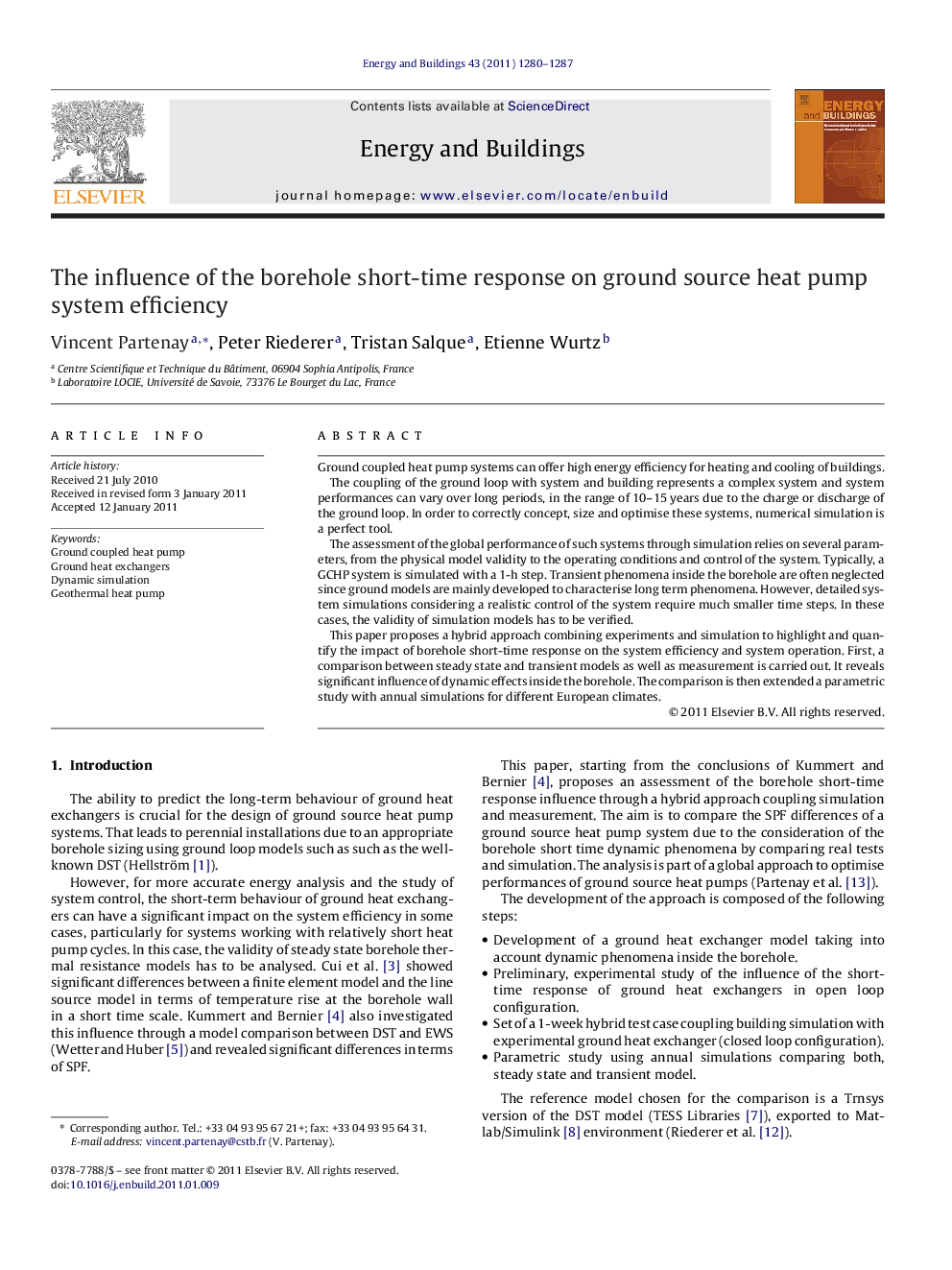| Article ID | Journal | Published Year | Pages | File Type |
|---|---|---|---|---|
| 264638 | Energy and Buildings | 2011 | 8 Pages |
Ground coupled heat pump systems can offer high energy efficiency for heating and cooling of buildings.The coupling of the ground loop with system and building represents a complex system and system performances can vary over long periods, in the range of 10–15 years due to the charge or discharge of the ground loop. In order to correctly concept, size and optimise these systems, numerical simulation is a perfect tool.The assessment of the global performance of such systems through simulation relies on several parameters, from the physical model validity to the operating conditions and control of the system. Typically, a GCHP system is simulated with a 1-h step. Transient phenomena inside the borehole are often neglected since ground models are mainly developed to characterise long term phenomena. However, detailed system simulations considering a realistic control of the system require much smaller time steps. In these cases, the validity of simulation models has to be verified.This paper proposes a hybrid approach combining experiments and simulation to highlight and quantify the impact of borehole short-time response on the system efficiency and system operation. First, a comparison between steady state and transient models as well as measurement is carried out. It reveals significant influence of dynamic effects inside the borehole. The comparison is then extended a parametric study with annual simulations for different European climates.
